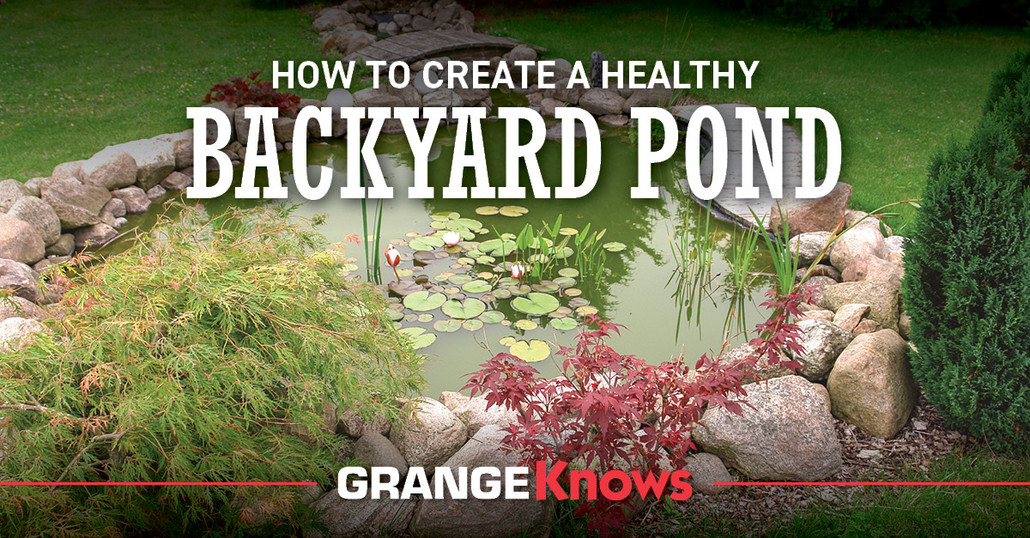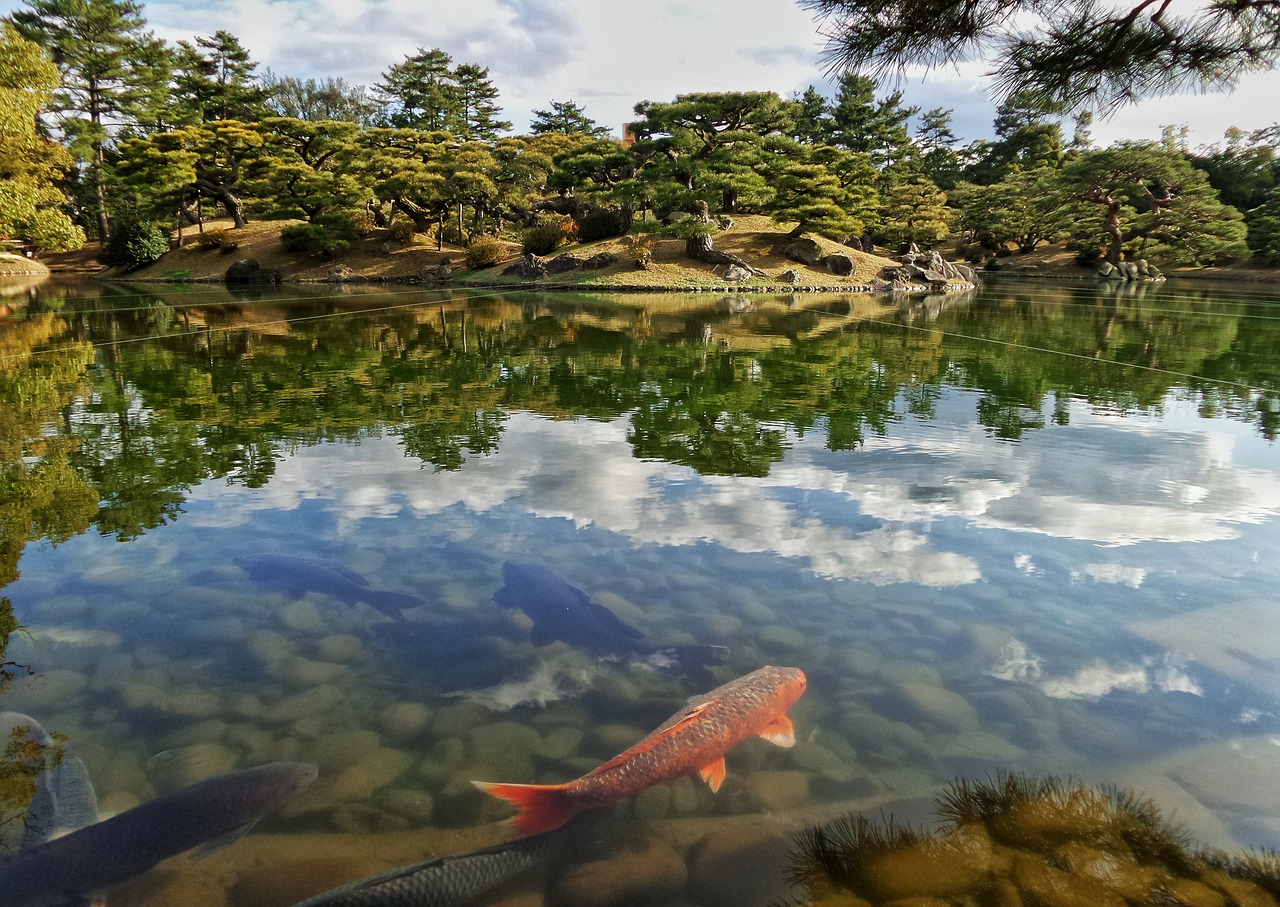
How to Create a Healthy Backyard Pond
Posted by Grange Co-op on 21st Jun 2022
Backyard ponds have become an important landscaping feature. They come with a lot of benefits, and most require minimal maintenance. There are different types of ponds, all of which have some requirements for keeping them clean and healthy.
Types of Backyard Ponds
There are many different types of ponds that you can choose from, each beautiful in its own way, however, you might base your choice on your location, or what you want to accomplish with your landscaping. Some popular ideas include:

Koi Pond
A pond filled with beautiful Japanese koi fish brings a sense of relaxation and peace. You can make their ponds simple and clean or create a water garden that has plants, gravel, and rocks. The only things you need are a pond, the liner, adequate water for the number of fish you have, and a heater if you live in a colder climate.
Koi fish can survive in temperatures from 34 to 90 degrees Fahrenheit. However, their digestive system slows as the temperature drops. You can feed them once the temperature drops below 54 degrees. If the pond freezes over, your koi will die. So if you live in a cold climate and leave your fish outside during the winter, you will need to put a heater in it to keep your koi healthy.
Koi are not only beautiful fish, but they are also quite resilient. They live on average from 25 to 30 years, with some living up to 100 years old. They are omnivores, meaning they eat other fish, algae, and fruit. Feed them fish food made especially for koi to enhance their red and gold color. Use floating pond food and feed them the amount they can eat in two minutes twice daily.
When building a koi pond, you should design it at least 3 feet deep. The size of the pond depends on the size of your backyard, how many fish you want to keep, and which type of koi you fill it with. Some species grow much larger than others. The basic rule of thumb is 1” of fish for every 10 gallons of water. This allows you to estimate how many fish you can have based on their estimated size as adults.
As with every pond, you will need a good filter to clean out and aerate it. Implementing a waterfall will also help create a healthier environment. Water features encourage movement and the exchange of gases to help aerate the pond, and they also add to the beauty and tranquility of the setting.
Fishpond
While a koi pond is a popular choice for backyards, they aren’t the only type of fishpond you can build. Other types of fish might be better suited to your environment or the size limitation of your backyard.
Decide what kind of fish you want before you build the pond. The next popular choice after koi is goldfish. They are more affordable and require less attention than the more exotic species.
You need to have 100 gallons of water for the first fish and another 30 gallons each for every additional fish. If you live in a warmer climate, you can keep your pond depth at 2 feet. If you have colder winters where the water will ice over, make your pond 3 feet deep to protect the fish.
Goldfish don’t need as much fish food as koi. They are opportunistic eaters that feed on bugs and leaves in the pond. Use floating fish food and remove the uneaten pieces after three to five minutes. You may need to increase the amount of food offered when temperatures get colder and other resources are no longer available.
There are other types of fish you can put in your pond, including rosy red minnows, mosquitofish, and sunfish. If your goal is to have a smaller pond, choose your fish species wisely. However, opting for a small fish species isn't enough. You also need to know how quickly they breed and multiply to prevent overcrowding. Some pond owners introduce a type of predator fish to reduce fish population growth naturally.
Plant Pond

If you like the idea of having a beautiful pond but don’t want the hassle of taking care of fish, a plant pond or garden pond might be the ideal compromise. But don’t ignore the importance of keeping the pond healthy. Every backyard pond becomes a part of the environment. It can also serve as a water source for pets, birds, and wild animals.
Plants are a healthy addition to any pond. They help prevent the growth of green algae, and the right plants are wildlife-friendly. They also add a lot of visual appeal to your entire backyard.
There are five basic types of aquatic plants. The best way to create diversity around your pond is to mix and match a variety of each type.
Deep Water and Oxygenating Plants – This group of plants includes some that are totally submerged, as well as types that stick partially out of the water and which float on top. They naturally filter out nutrients from the water that can cause nuisance algae growth. In addition, they help keep your pond clean and clear. Hornwort, arrowhead, and fanwort are among the most common choices.
Bog Plants – While not defined as strictly aquatic, bog plants do have permanently wet roots. They sit around the perimeter of the water, helping to give the pond its shape. Some popular species include iris, canna lily, and cardinal flower.
Marginal Plants – The roots of marginal plants are submerged in water while the rest of the plant rises above the surface of the water. Chinese Lizard Tail and Rainbow Water Celery are some examples.
Deep Marginal Plants – Deep marginal plants, such as water iris and marsh marigold, emerge and flower above the water's surface.
Floating Plants – Some popular floating plants include water hyacinths and water lettuce. They float on the surface of the water, giving the fish shade and providing other wildlife with a resting place.
Get Your Backyard Pond Supplies at Grange Co-op
There are many benefits to having a backyard pond, from creating a tranquil space to increasing property value. If you need help finding the right fish food or other supplies for your pond, contact us or visit one of our retail stores to speak with our Grange Experts.
